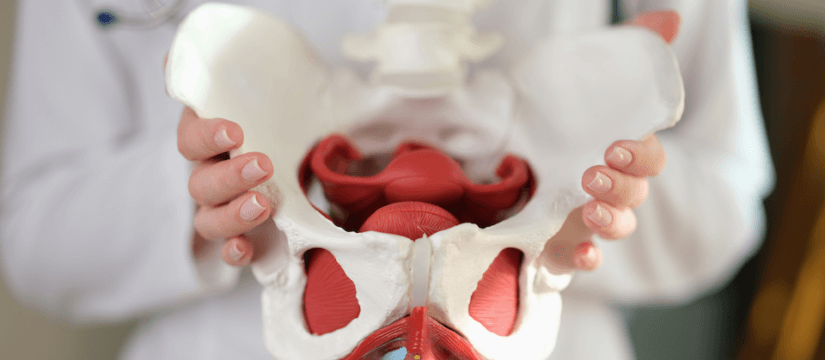
Biofeedback therapy enhances your rehabilitation experience by teaching you how to control and change the behavior of your pelvic floor. If you don’t know how to contract or relax your pelvic floor muscles, then biofeedback therapy can help you make that connection and improve your overall pelvic health.
What is biofeedback therapy for the pelvic floor?
During biofeedback therapy, electrodes are placed on your pelvic floor with adhesive pads or inserted vaginally or rectally using a probe. Your muscles produce electrical signals, which are picked up and sent to a computer to display a visual or auditory signal. These cues help to increase your awareness and improve your ability to control your pelvic floor muscles.
Using biofeedback in addition to pelvic floor muscle training will improve your muscle contraction force and ability to relax. As your pelvic floor muscles return to normal, your symptoms improve.
What can pelvic floor biofeedback treat?
Combining biofeedback with pelvic floor muscle training will enhance your function and quality of life. Biofeedback therapy treats pelvic floor dysfunctions such as:
- Urinary incontinence
- Bowel constipation
- Erectile dysfunction
- Chronic pelvic pain
Our pelvic floor physical therapists will teach you how to properly contract and relax your muscles with a prescribed series of exercises. Biofeedback therapy can help you improve your pelvic floor muscle strength, coordination, and speed of contraction, which is needed to hold back urine during a sneeze.
3 Reasons You Need Biofeedback Therapy
1. Biofeedback is a non-invasive and conservative treatment.
Adhesive electrodes are placed on your skin, after which you can preserve your modesty and complete your treatment session covered up. After training, you can even continue your rehabilitation in the comfort of your own home. The use of internal probes makes set-up easier. Inserting a vaginal or rectal probe is very similar to inserting a tampon. And you don’t have to worry about placing electrodes on the same spot on your skin for every treatment session. Finally, there is minimal risk in using biofeedback therapy.
2. Reduce or eliminate your dependency on medications.
As your pelvic floor function improves, pelvic pain will decrease, which can help you eliminate or reduce your need to take medications such as over-the-counter or prescription pain medications. As you gain more control of your pelvic floor, you can enhance the effects of anticholinergic drugs to reduce overactive bladder. Eventually, you can wean off these medications as you develop more control over your bladder symptoms. Biofeedback therapy can also help women avoid taking medications during pregnancy.
3. It’s fun and motivating.
Many at-home units will show you on a display screen what you are doing. They provide targets for you to reach, and you can create challenges for yourself to help keep you motivated to reach your goals. And ultimately, you will learn enough from your physical therapist to continue managing your pelvic floor symptoms at home to reduce the length of your treatment.
Biofeedback therapy can help you learn how to connect with your pelvic floor to reach your goals quickly and optimally. As you become more aware of your pelvic floor muscles, you’ll be able to practice confidently. Take control and direct your own pelvic health care. Reduce your need for medication and surgery by training your muscles with biofeedback therapy and reducing your pelvic floor symptoms.
